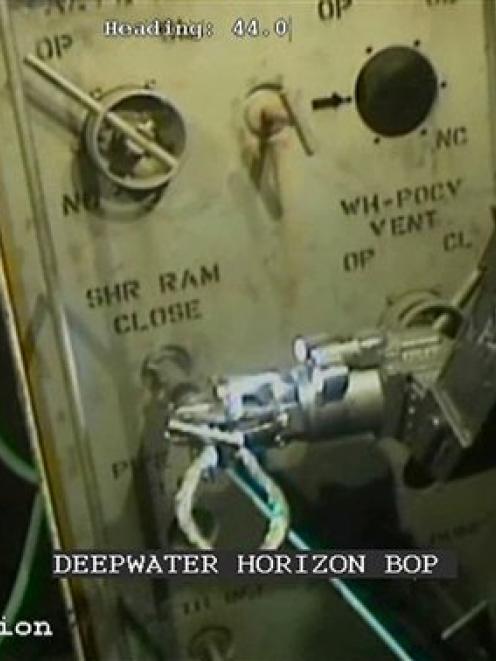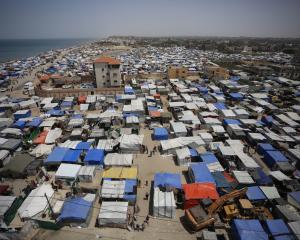
If crews cannot stop the leak quickly, they might need to drill another well to redirect the oil, a laborious process that could take weeks while oil washes up along a broad stretch of shore, from the white-sand beaches of Florida's Panhandle to the swamps of Louisiana.
The oil is escaping from two leaks in a drilling pipe about 1500m below the surface. The leaks threaten hundreds of kilometres of coastline in four states, with waters that are home to dolphins, sea birds, and prime fishing and tourism areas.
The oil began gushing out of the sea floor after the rig Deepwater Horizon exploded April 20 and sank two days later about 60km off the Mississippi River delta. Eleven of the 126 workers aboard at the time are missing and presumed dead; the rest escaped. The cause of the explosion has not been determined.
As of Monday afternoon, an area 77km long and 62km wide was covered by oil that leaked from the site of the rig, which was owned by Transocean and operated by BP PLC.
Crews used robot submarines to activate valves in hopes of stopping the leaks, but they may not know until later today if that strategy will work. BP also mobilised two rigs to drill a relief well if needed. Such a well could help redirect the oil, though it could also take weeks to complete, especially at that depth.
Kenneth E. Arnold, an offshore production facility expert, said relief wells pose serious engineering challenges.
"Sometimes you have to drill through the steel, and that's what happened in Australia," he said, referring to a blowout last August on a rig called the West Atlas in the Timor Sea. "It took them three times before they were successful."
Not until November could mud be pumped through a relief well to shut off the deepwater spigot. The spill has resulted in major environmental damage along the coast of East Timor and Indonesia.
BP plans to collect leaking oil on the ocean bottom by lowering a large dome to capture the oil and using pipes and hoses to pump it into a vessel on the surface, said Doug Suttles, chief operating officer of BP Exploration and Production.
"That system has been deployed in shallower water," he said, "but it has never been deployed at 5,000 feet of water, so we have to be careful."
The US spill, moving slowly north and spreading east and west, was about 50km from the Chandeleur Islands off the Louisiana coast Tuesday. The National Oceanographic and Atmospheric Administration said oil would not reach the coast for several days. The Coast Guard said kinks in the pipe were helping stem the flow of oil.
George Crozier, oceanographer and executive director at the Dauphin Island Sea Lab in Alabama, said he was studying wind and ocean currents driving the oil.
He said Pensacola, Florida, is probably the eastern edge of the threatened area, though no one really knows what the effects will be.
"We've never seen anything like this magnitude," he said. "The problems are going to be on the beaches themselves, that's where it will be really visible."
Aaron Viles, director for New Orleans-based Gulf Restoration Network, an environmental group, said he flew over the spill Sunday and saw what was likely a sperm whale in the oil sheen.
"There are going to be significant marine impacts," he said.
Concern is focused on the Chandeleur and Breton barrier islands in Louisiana, where thousands of birds are nesting.
"It's already a fragile system. It would be devastating to see anything happen to that system," said Mark Kulp, a University of New Orleans geologist.
The spill also threatened oyster beds in Breton Sound on the eastern side of the Mississippi River. Harvesters could only watch and wait.
"That's our main oyster-producing area," said John Tesvich, a fourth-generation oyster farmer with Port Sulphur Fisheries Co. His company has about 4,000 acres of oyster grounds that could be affected if the spill worsens.
"Trying to move crops would be totally speculative," Tesvich said. "You wouldn't know where to move a crop. You might be moving a crop to a place that's even worse."
He said oil and oysters are not a good mix. If the oyster grounds are affected, thousands of fishermen, packers, processors might have to curtail operations.












